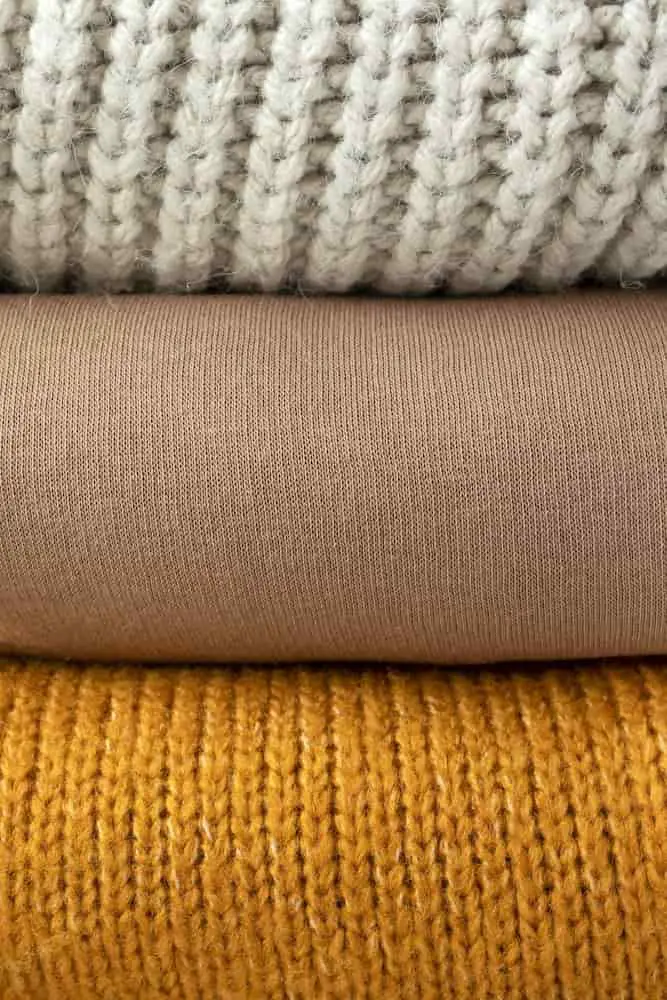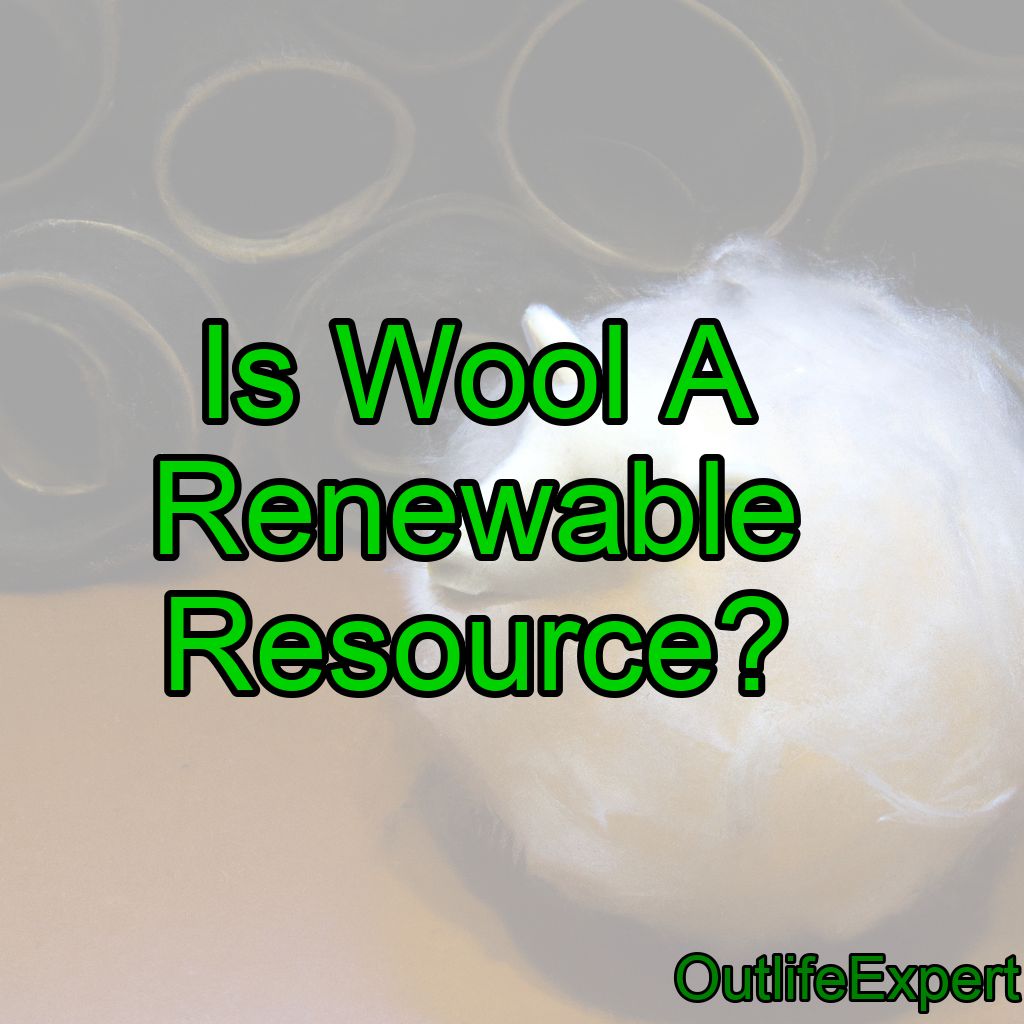When it comes to sustainability, wool is often overlooked. But did you know that this natural fiber could be a renewable resource?
Yes, wool is a renewable resource. It is a natural fiber obtained from the fleece of sheep, which grow a new coat of wool every year. This process of regrowth makes wool a sustainable and renewable resource. To maintain its renewability, it is essential to practice responsible sheep farming, ensuring the health and welfare of the animals, and managing land resources effectively.
The only downside to this eco-fabric is that animals like sheep are heavy on the methane discharge, which contributes to global warming. In this regard plant-based fabrics like cotton and linen are preferable.
Wool has been around for centuries; it’s durable and long-lasting – two qualities that make it ideal as a renewable resource. Plus, unlike synthetic materials which require fossil fuels or other nonrenewable energy sources to produce, wool grows naturally on sheep without any need for artificial inputs. It’s also biodegradable and recyclable.
With so many benefits already in its favor, there’s no denying: wool could just be the answer to our sustainability woes!

Wool is a renewable resource, and it has been used for millennia as an important material in clothing production. It’s one of the oldest fibers known to humankind and has remained popular due to its versatile properties and sustainable qualities.
Through permaculture practices, wool can be ethically sourced while also minimizing animal welfare concerns and carbon footprints.
Fair trade standards ensure that the labor involved in wool-gathering is fairly compensated while still providing economic benefits to local communities.
Wool truly is a unique fiber with ethical sourcing opportunities, making it ideal for companies looking to reduce their environmental impact without compromising on quality.
Contents
What are Other Sustainable Alternatives to Wool?
Unfortunately, wool is not always an ethical or sustainable resource since it comes from animals. While animal husbandry can be sustainable in certain contexts, the production of wool does require significant resources to raise and maintain these animals.
Animals like cows and sheep also lead out a lot of methane gas, which is a strong greenhouse gas, so products made directly from plant materials will always be more eco friendly.
Therefore, if you’re looking for more eco friendly fibers than wool, there are some alternatives worth considering.
Additionally, cotton and linen that have been grown organically without any chemical pesticides or other harmful substances provide another viable alternative.
These natural materials are both strong and durable while still being breathable and comfortable against your skin – perfect for outdoor adventures.
Synthetic materials such as polyester or nylon made from recycled plastic bottles are also an option for greener production with reduced waste, but is not considered sustainable due to the involvement of fossil fuels as a raw material.
No matter which type of fabric you ultimately decide on, make sure to look into its origins before buying so you know exactly what kind of impact the product has had on our planet’s resources!
Advantages of using wool
Moving on from the definition of wool, let’s take a look at some of its advantages.
Wool is an incredibly renewable resource that has numerous benefits for both environment and animal welfare. It is biodegradable, naturally produced without the need for any chemical processes or energy-intensive production methods.
Not only does this make it great for eco-friendly lifestyles, but also ensures that animals are not exposed to harsh chemicals during production.
Moreover, wool can be used again and again with minimal effort – simply washing and reshaping as required – so it can be reused multiple times over!
This allows us to create more sustainable fashion products while reducing our reliance on non-renewable resources like plastics and other synthetic materials.
On top of all these benefits, wool is also very lightweight yet warm, making it perfect for outdoor activities such as hiking or camping where you want something light to wear but still keep you protected from the elements. Its natural breathability helps regulate body heat even in extreme weather conditions, so you can stay comfortable no matter what nature throws your way.
All of which means that when you’re looking for fabrics to use outdoors, wool should definitely come into consideration! Now let’s move on to exploring the potential disadvantages…
Disadvantages of using wool
Wool is a natural resource that has long been used in the production of clothing and other items. Unfortunately, its use as a renewable resource comes with some drawbacks.
Wool requires extensive resources consumption to harvest and process, which can have an environmental impact on land used for organic production. Additionally, animal welfare concerns have led many consumers to seek out synthetic alternatives instead of wool products.
In terms of sustainability, wool also falls short when compared to other materials because it’s not easily recyclable or biodegradable. This means more resources are consumed each time new wool fabrics need to be produced, leading to increased pressure on existing raw material sources.
Moreover, the chemicals used in processing can cause further environmental damage if not handled properly.
All things considered, while wool may seem like a viable renewable resource option at first glance, there are significant drawbacks associated with its use that must be taken into account before making any decisions about how and where it should be used in commercial settings or by individual consumers. With this understanding in mind, let’s look at sustainable alternatives that could help reduce our overall reliance on traditional wool options.
What Is The Cost Of Wool Compared To Other Materials?
When it comes to sourcing fabrics for outdoor apparel, wool is a natural fiber that has been used for centuries.
But what does the cost of this material really mean in terms of economic issues and animal welfare?
To answer that question, let us explore the details behind its sustainability as well as renewable alternatives that can provide similar benefits without sacrificing ethics or quality.
With an understanding of these considerations, we can make more informed decisions about our clothing investments while enjoying the freedom of being on the trail.
What Is The Environmental Impact Of Raising Sheep For Wool?
Raising sheep for wool is a complex issue, as it involves far-reaching impacts on animal welfare, water usage, carbon emissions and transport costs.
As an outdoor expert, I can tell you that sustainable farming practices are key to minimizing these environmental concerns.
To ensure the best outcomes for both your conscience and wallet, choose wool from farms that prioritize ethical animal husbandry and take steps to reduce their water usage and carbon emissions – all while keeping transport costs low.
With the right approach, wool can be part of a more conscious lifestyle!
Is Wool Biodegradable?
When it comes to animal welfare and sustainable textiles, wool is a great option. But is it biodegradable? The answer is yes!
Wool fibers can be broken down by bacteria, fungi, and other organisms in the environment. Eco shearing practices are also becoming more popular with ethical farming operations as a way to reduce waste.
Furthermore, cruelty free farms are devoted to producing sustainable textiles that bring us closer to nature while still offering cozy warmth for those seeking freedom from the cold winter months.
How Much Wool Is Used In The Fashion Industry?
While it may not be immediately obvious, wool is actually a major player in the fashion industry.
As such, sustainability standards and ethical production must be taken into account when producing clothing from this renewable resource.
It’s essential to consider animal welfare, carbon footprint, and energy consumption so that companies are able to responsibly provide high-quality garments for those who desire freedom of style.
With careful attention paid to the impacts of wool production on our environment, we can make strides towards creating an outdoor lifestyle free of guilt or worry.
What Are The Benefits Of Using Wool Over Synthetic Materials?
When sourcing wool, animal welfare and ethical production should be at the forefront of your mind.
Wool is an incredibly versatile material that has been used in fashion for centuries – but it can also have a positive impact on the environment when sourced responsibly.
With sustainability standards becoming ever more important, wool processing is now done with far greater care than ever before.
This ensures that those who buy into this material are doing so ethically, while also reaping the benefits of using something natural over synthetic materials – freedom from harmful chemicals, superior insulation properties and increased comfort levels being just some of them!
Conclusion
In conclusion, wool is an incredibly valuable renewable resource. It’s cost-effective compared to other materials and has a low environmental impact when raised responsibly. Plus, it’s biodegradable which makes it even more sustainable!
And lastly, the benefits of using wool over synthetic fabrics are numerous – from its breathability to its insulation properties – making it ideal for outdoor clothing and accessories.
Overall, wool presents us with a great opportunity to lessen our reliance on non-sustainable resources while providing us with durable and comfortable garments that can be worn in any season.
Investing in quality pieces made out of this natural material means you’ll have apparel that will last through all your adventures while helping protect the environment at the same time.
So if you’re looking for something beautiful and functional to add to your wardrobe, consider investing in some high-quality wool items. Not only will they keep you warm during those winter hikes but they’ll also help conserve nature’s precious resources too!




